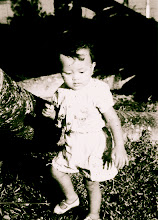


Please visit
Linguists have classified Cham as a member of the Malayo-Polynisian family spoken by several ethnic groups lived along the coast of South China sea and the Malay Archipelago. As they come from one linguistic family, the Cham, Malay and Javanese languages share numerous lexical similarities. The written Cham is based on the Sanskrit alphabets. As early as the 3rd century AD, inscription of Sanskrit texts were found on the steles as they were used to record royal chronicle and important historical events. This epigraphic practice ceased in 1471 with the downfall of Champa. About the mid-16th century, a modern form of Cham emerged and gradually replaced the classical (old Cham) language which heavily used Sanskrit and Arabic vocabularies . Modern Cham became more popular in the 17th through the 19th century as a number of manuscripts and texts of history, religion, folklore and legends, poetry and epics were written in the new language.
Champa has a rich and illustrated literary heritage exemplified by numerous works in both oral and written forms. The most well known works of the classical Cham literature are:
Pramdit Pramlak: A popular and well loved folk story of two brothers Pramdit and Pramlak and their long journey to find and save Pram Dit's wife, princess Bia Cata.
Inra Sri Bikan: A folk prose of the Cham hero, prince Sang Jana and his struggle to reconquer his kingdom previously lost to the neighborly king Rayana.
Ariya Um Marup: This popular verse of 248 sentences believed to be composed around the end of 16th century-early 17th century. This epic tells the story of a prince, Um Marup who was converted to Islam by the Prophet who later helped him to destroy the dragon, which had devastated his father's kingdom. But his father, King Harum who did not accept his son's belief, decided to eliminate Um Marup. With help from the Prophet, the prince rendered harmless all weapons aimed at him. Finally, Um Marup waged a war against his father, he was killed in the battle, but the Prophet once again interceded, defeated King Harum, and in turn, converted the King to under the umbrella of Islam.
Akayet Deva Mano: This long verse of 480 sentences is considered the most popular work in the classic Cham literature. Believed to be adapted from a Malaysian story, this epic is well loved by the Cham people for its beautiful poetry as well as its high moral values. The epic tells the story of two princes Deva Mano and Deva Samulaik and their fighting to marry princess Ratna Cahya Sribiyong. Akayet Deva Mano takes a very special place in the heart of the Cham people because it emphasizes the universal values such as goodness over evil, marital faithfulness, friendship loyalty, parental sacrifices framed in a well composed story and melodic verses.
Inra Patra: This long verse of 582 sentences first appeared in the early 17th century. This work is believed to be an adaptation of a Malaysian legend with a strong Islamic intonation.
Champa has a rich and illustrated literary heritage exemplified by numerous works in both oral and written forms. The most well known works of the classical Cham literature are:
Pramdit Pramlak: A popular and well loved folk story of two brothers Pramdit and Pramlak and their long journey to find and save Pram Dit's wife, princess Bia Cata.
Inra Sri Bikan: A folk prose of the Cham hero, prince Sang Jana and his struggle to reconquer his kingdom previously lost to the neighborly king Rayana.
Ariya Um Marup: This popular verse of 248 sentences believed to be composed around the end of 16th century-early 17th century. This epic tells the story of a prince, Um Marup who was converted to Islam by the Prophet who later helped him to destroy the dragon, which had devastated his father's kingdom. But his father, King Harum who did not accept his son's belief, decided to eliminate Um Marup. With help from the Prophet, the prince rendered harmless all weapons aimed at him. Finally, Um Marup waged a war against his father, he was killed in the battle, but the Prophet once again interceded, defeated King Harum, and in turn, converted the King to under the umbrella of Islam.
Akayet Deva Mano: This long verse of 480 sentences is considered the most popular work in the classic Cham literature. Believed to be adapted from a Malaysian story, this epic is well loved by the Cham people for its beautiful poetry as well as its high moral values. The epic tells the story of two princes Deva Mano and Deva Samulaik and their fighting to marry princess Ratna Cahya Sribiyong. Akayet Deva Mano takes a very special place in the heart of the Cham people because it emphasizes the universal values such as goodness over evil, marital faithfulness, friendship loyalty, parental sacrifices framed in a well composed story and melodic verses.
Inra Patra: This long verse of 582 sentences first appeared in the early 17th century. This work is believed to be an adaptation of a Malaysian legend with a strong Islamic intonation.

No comments:
Post a Comment